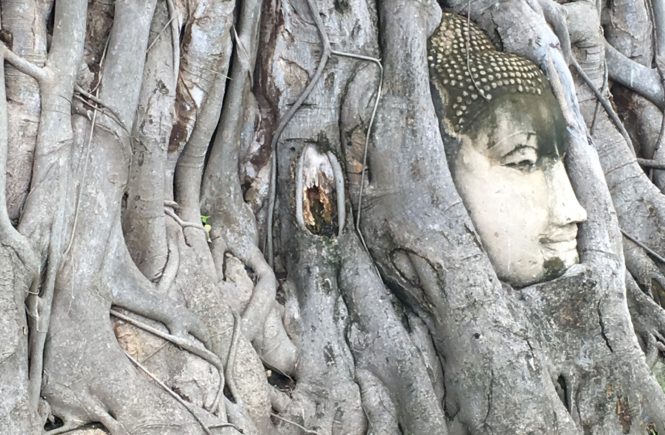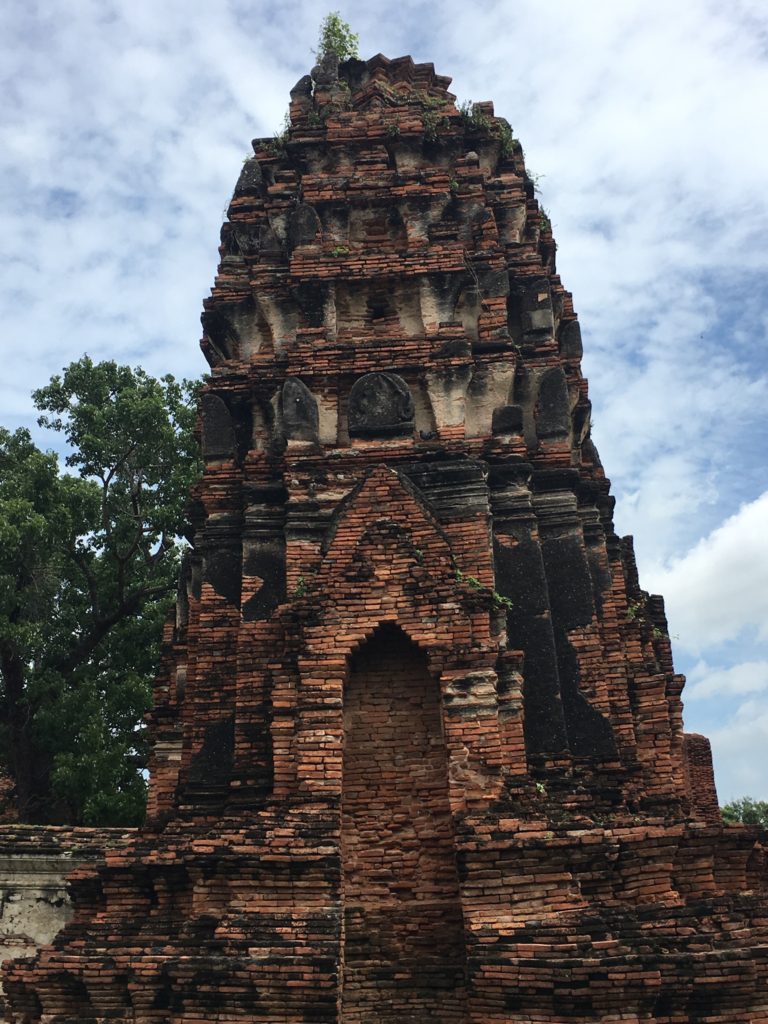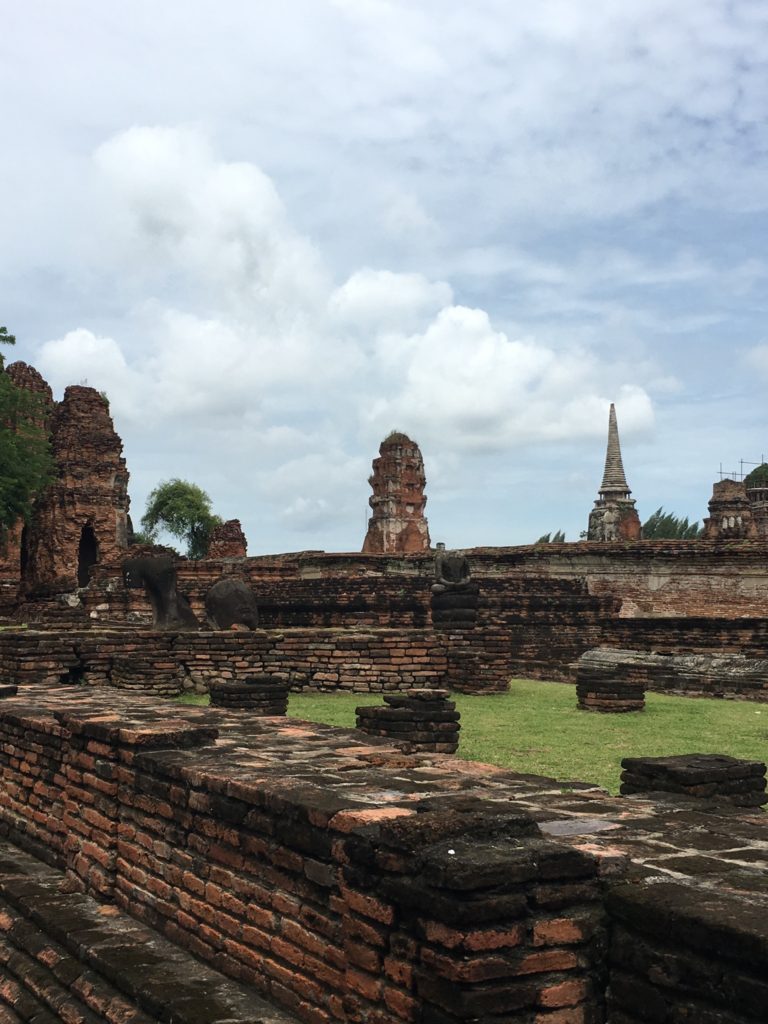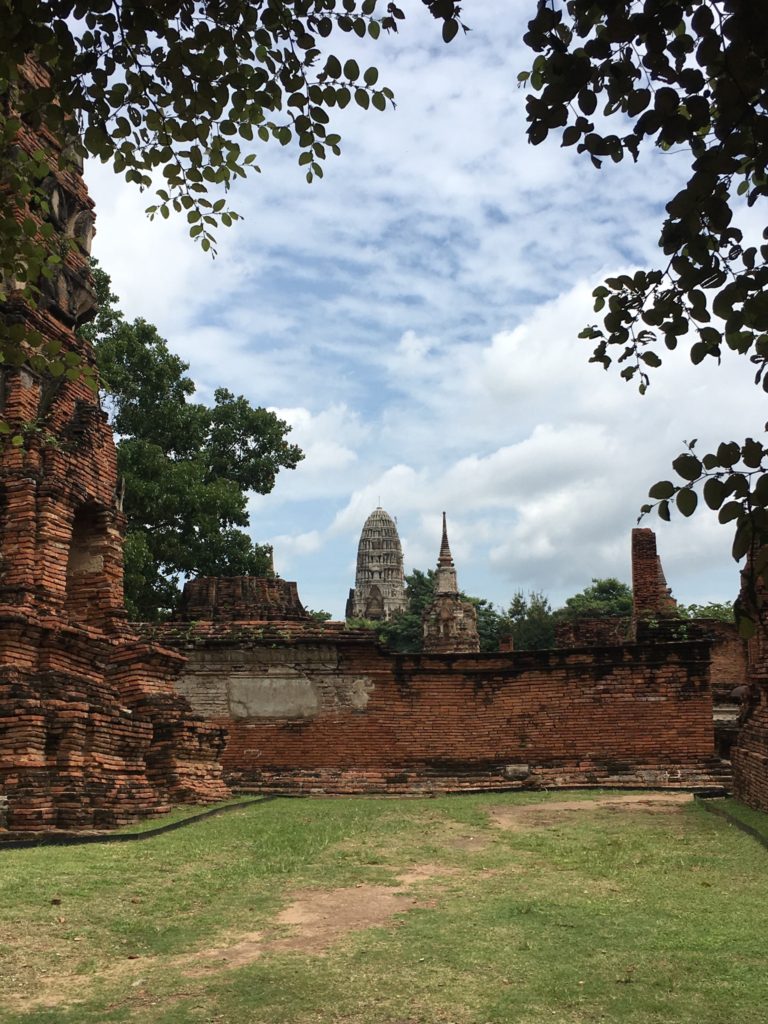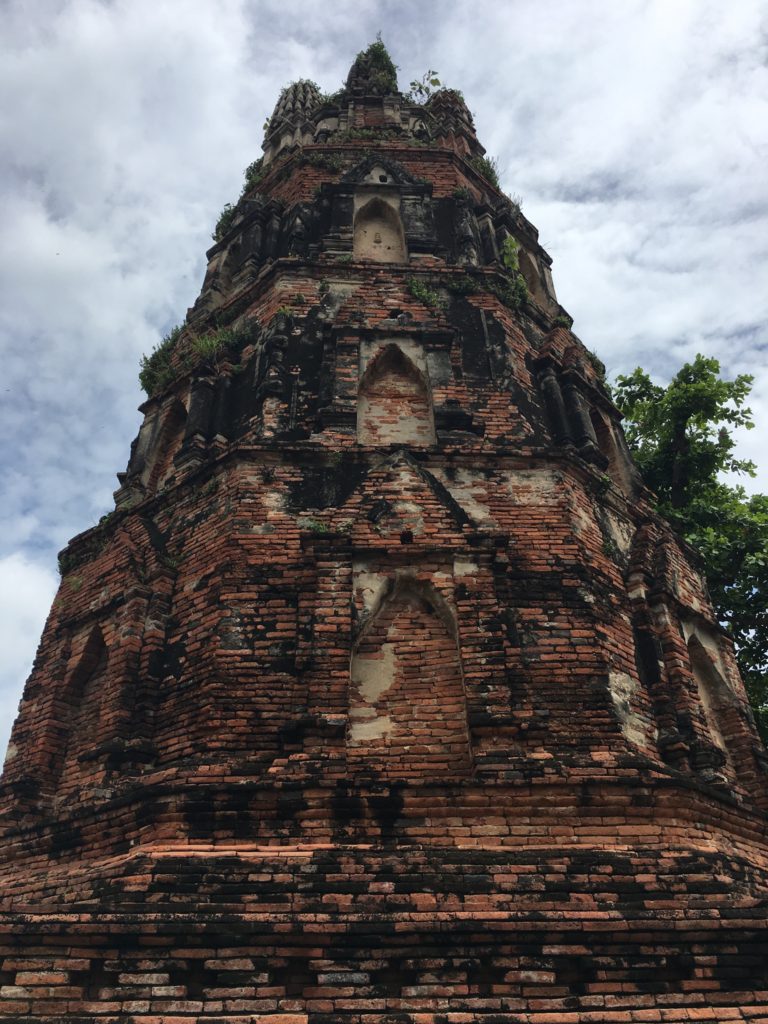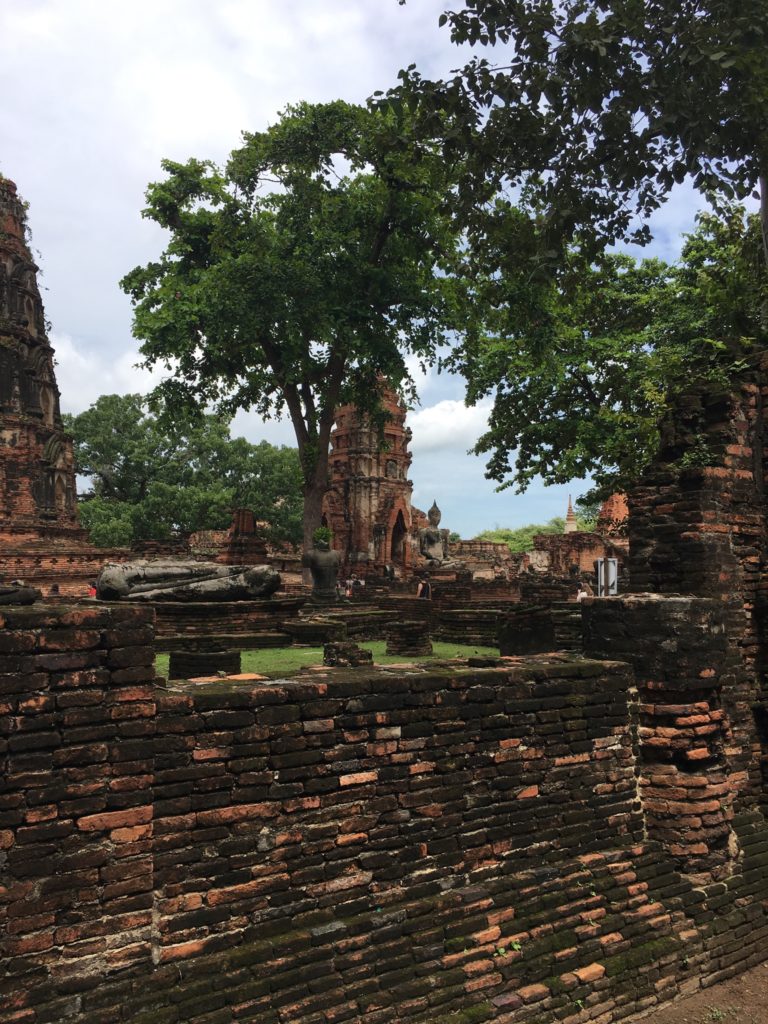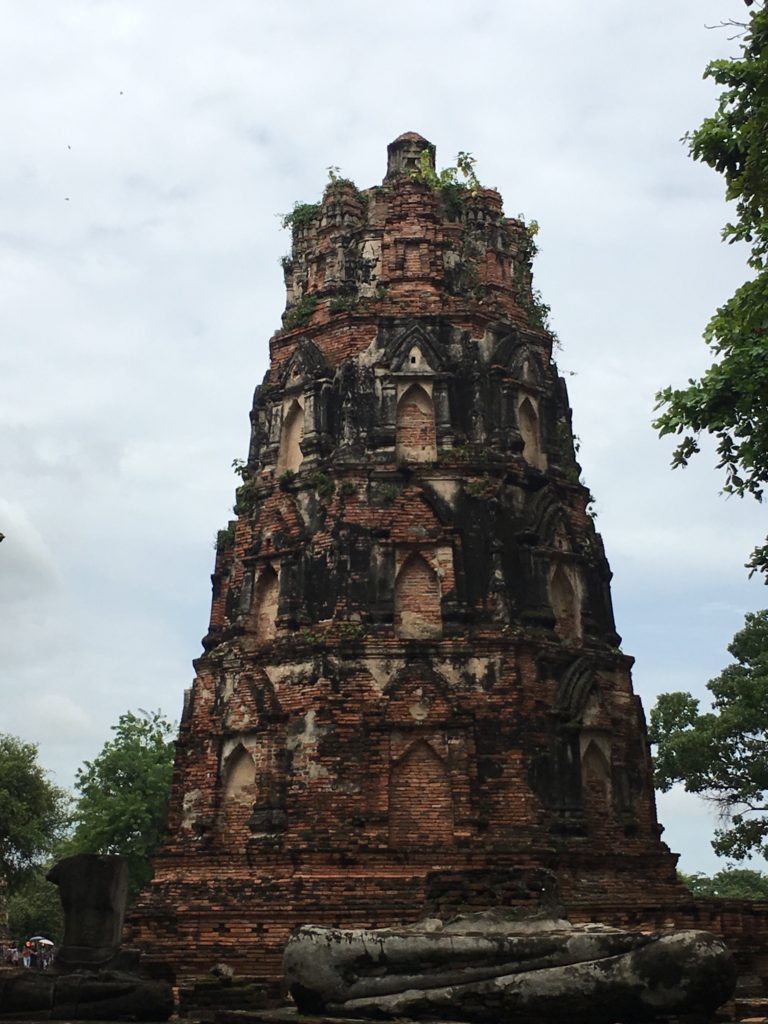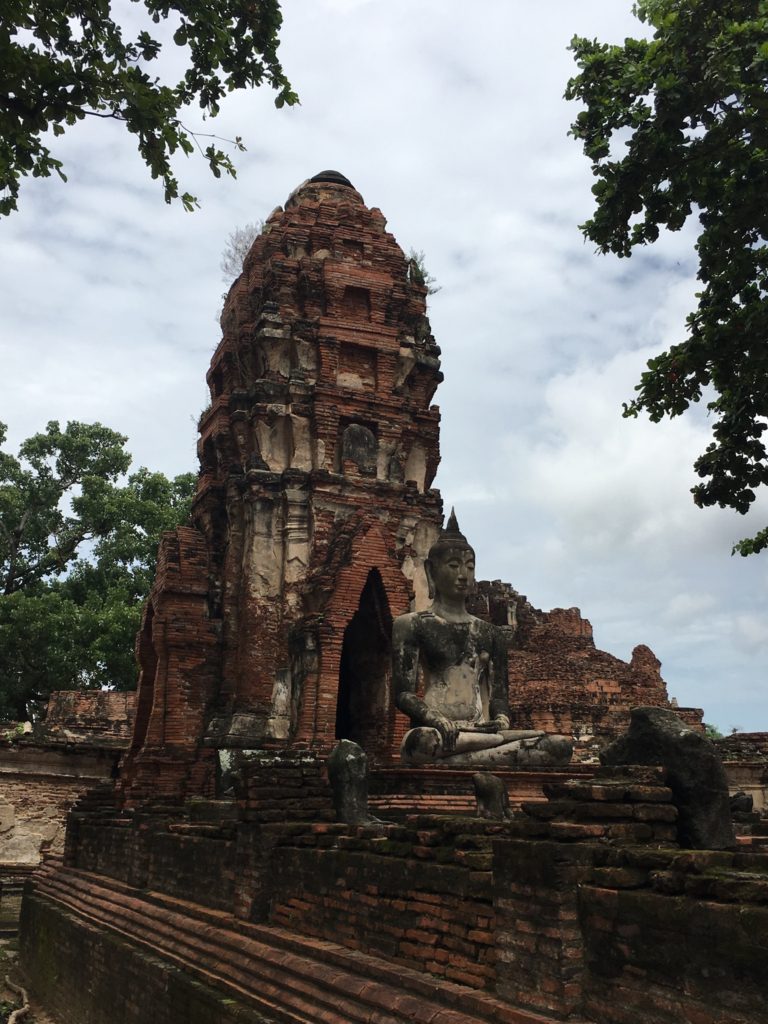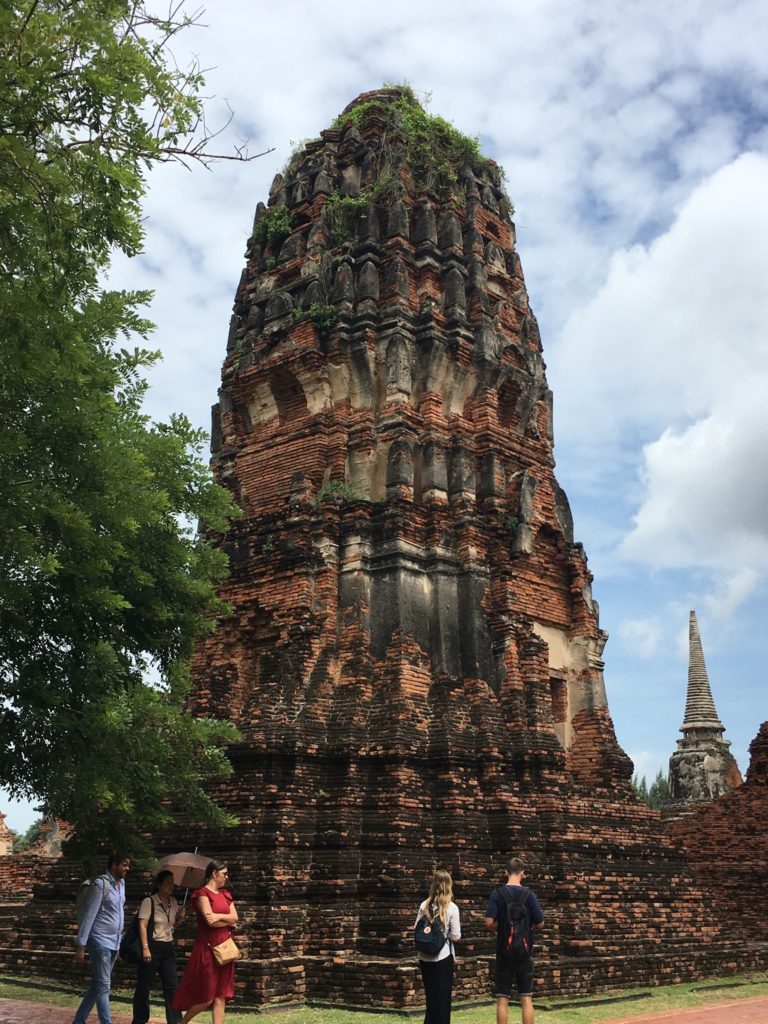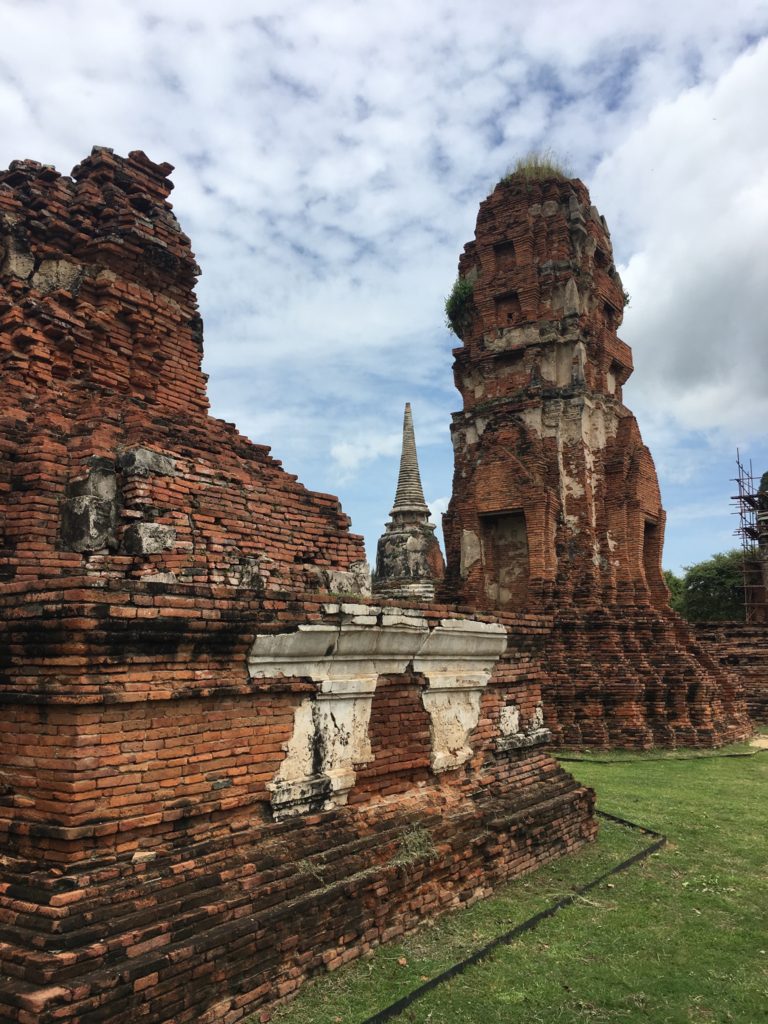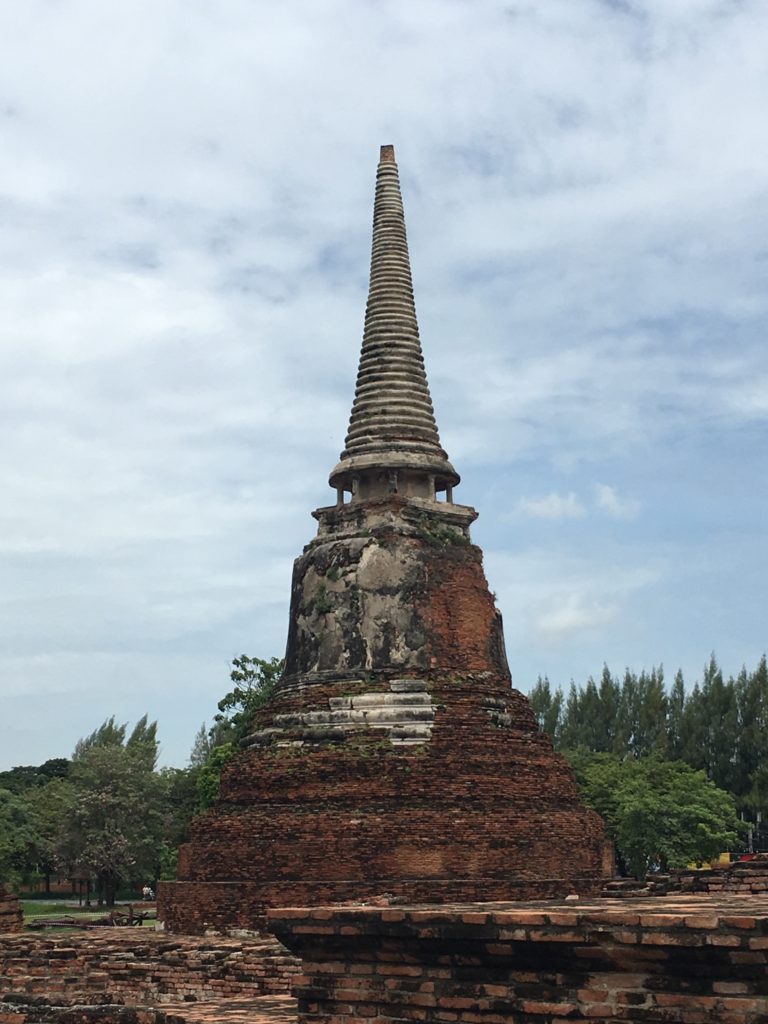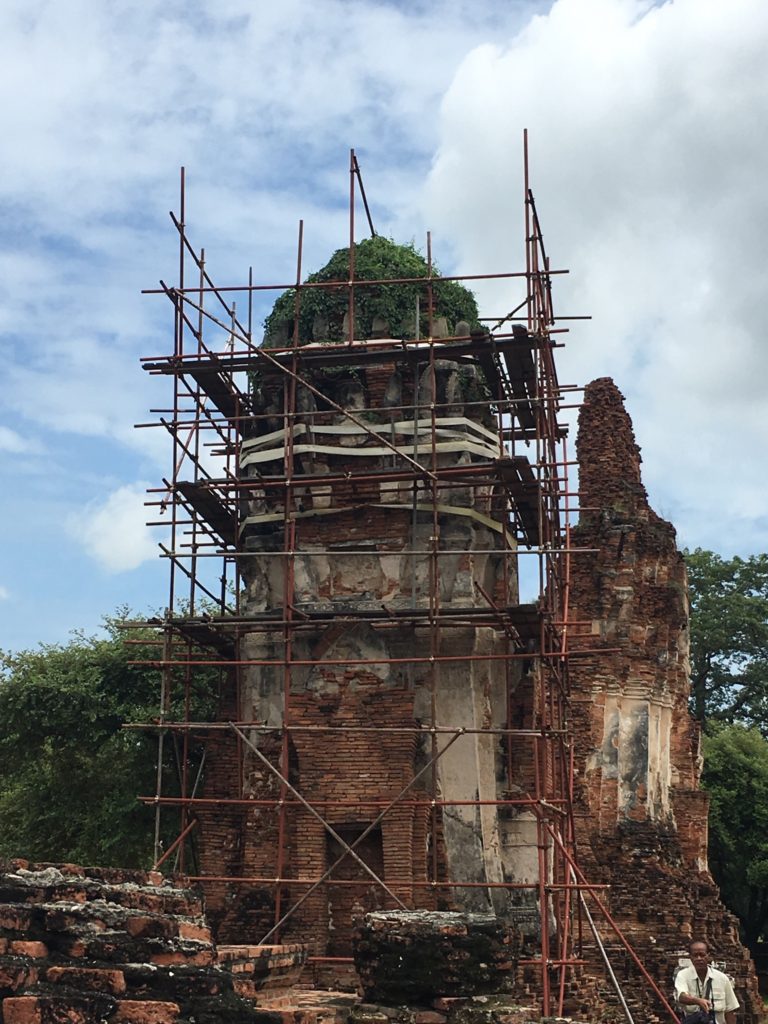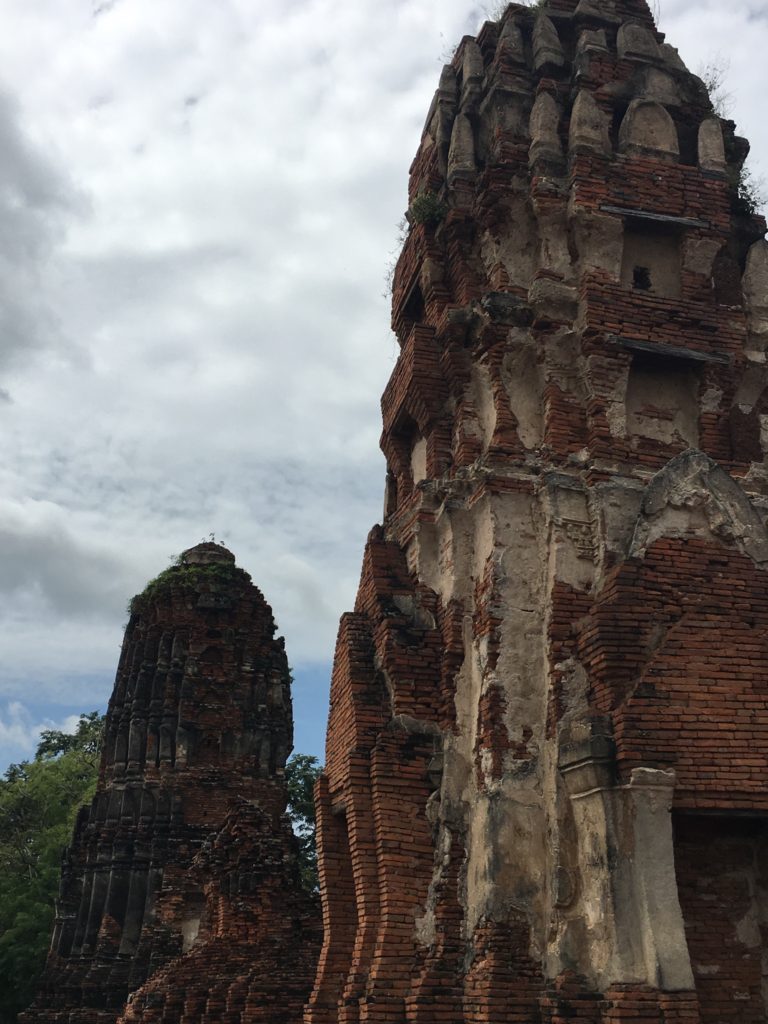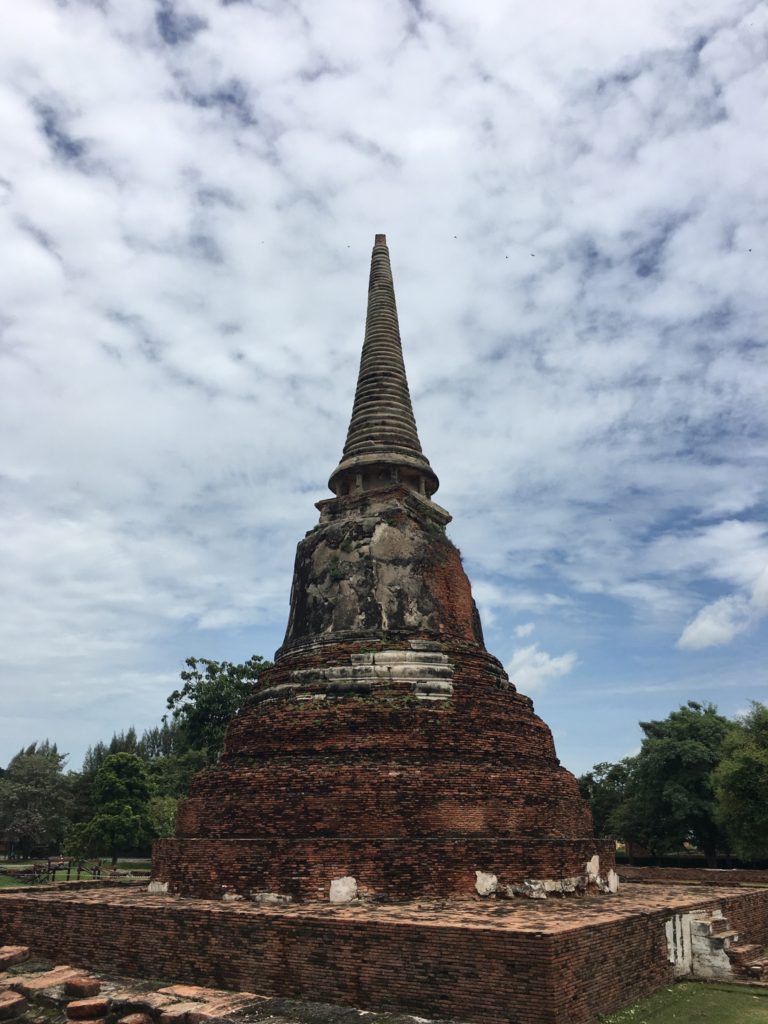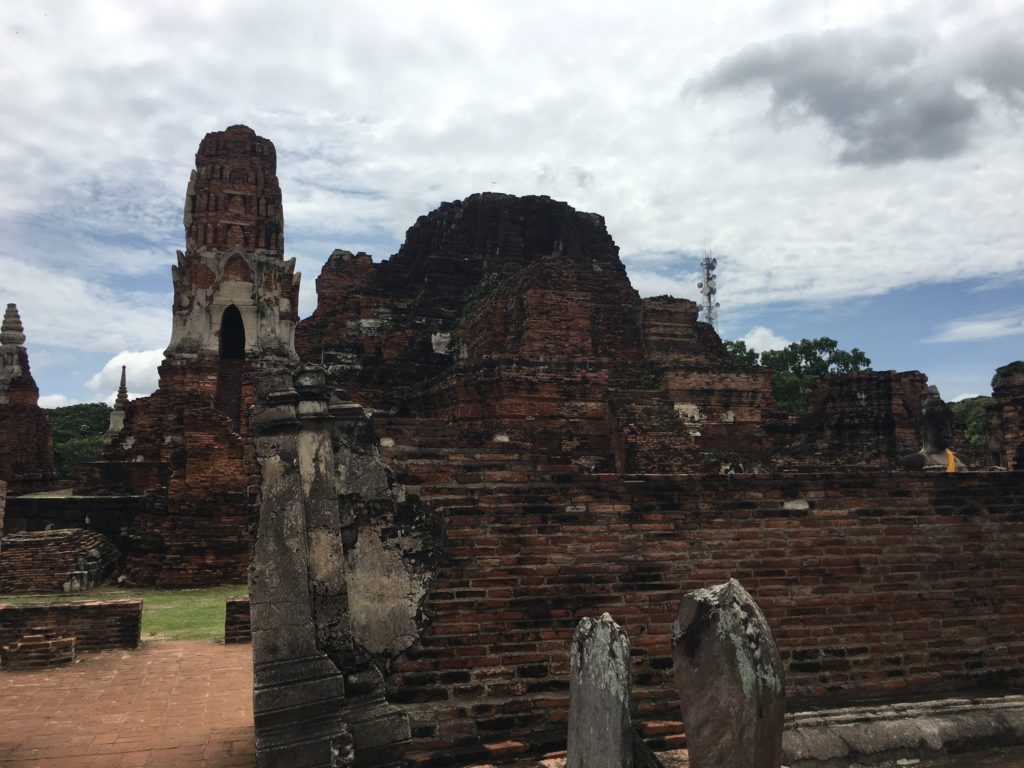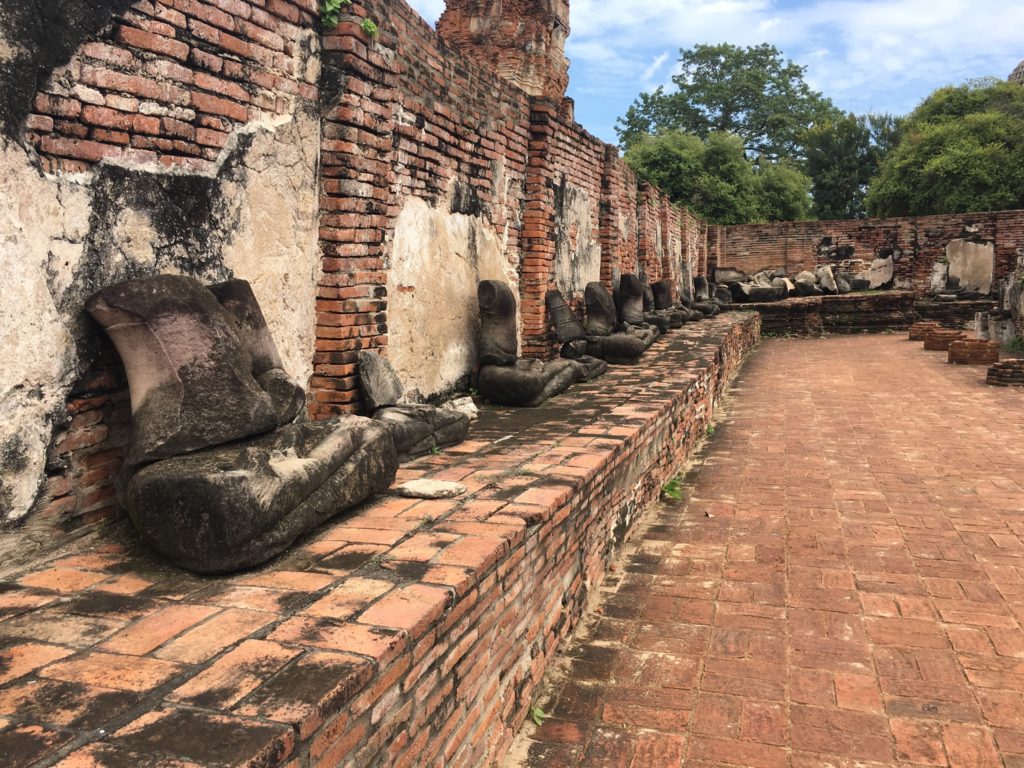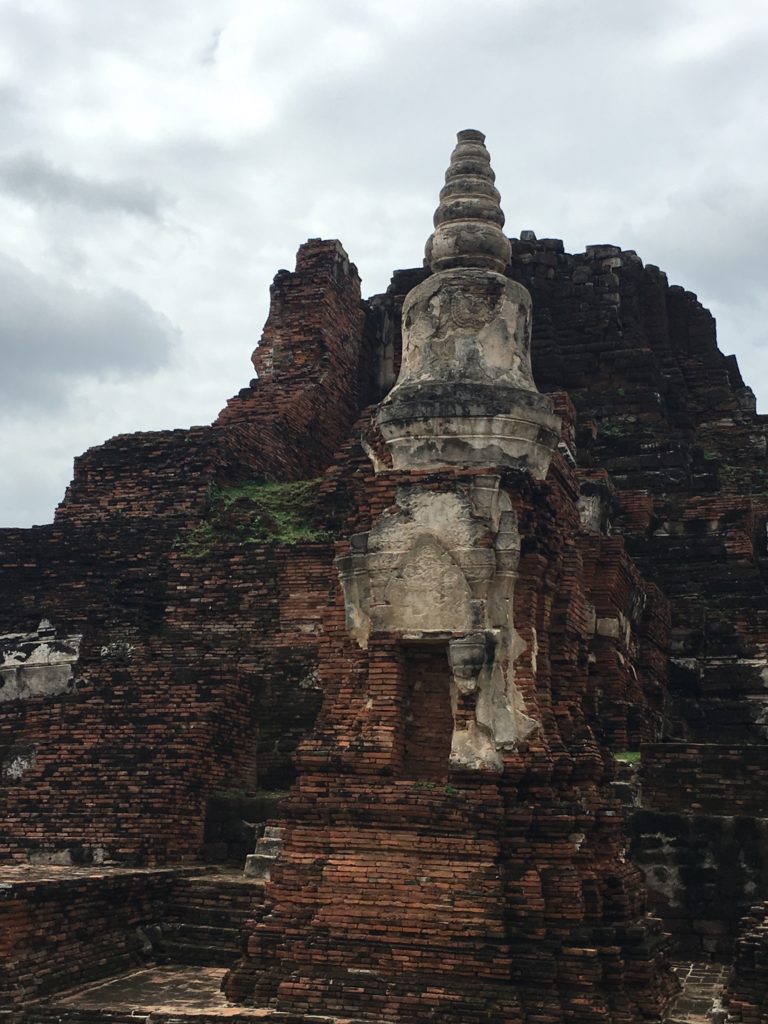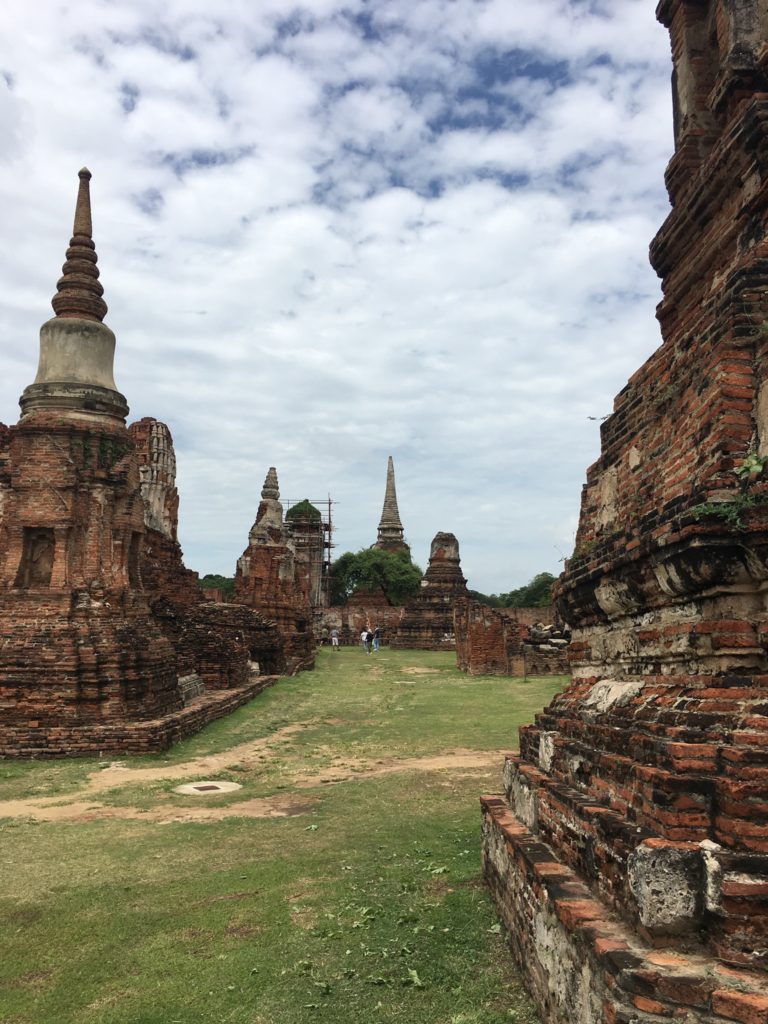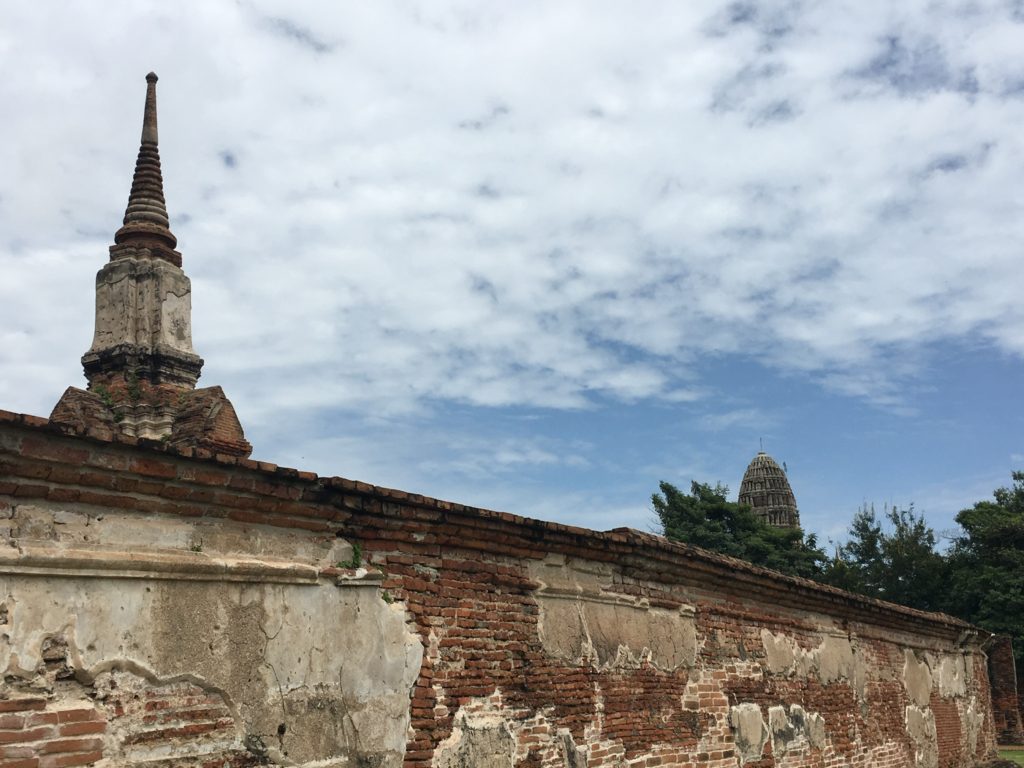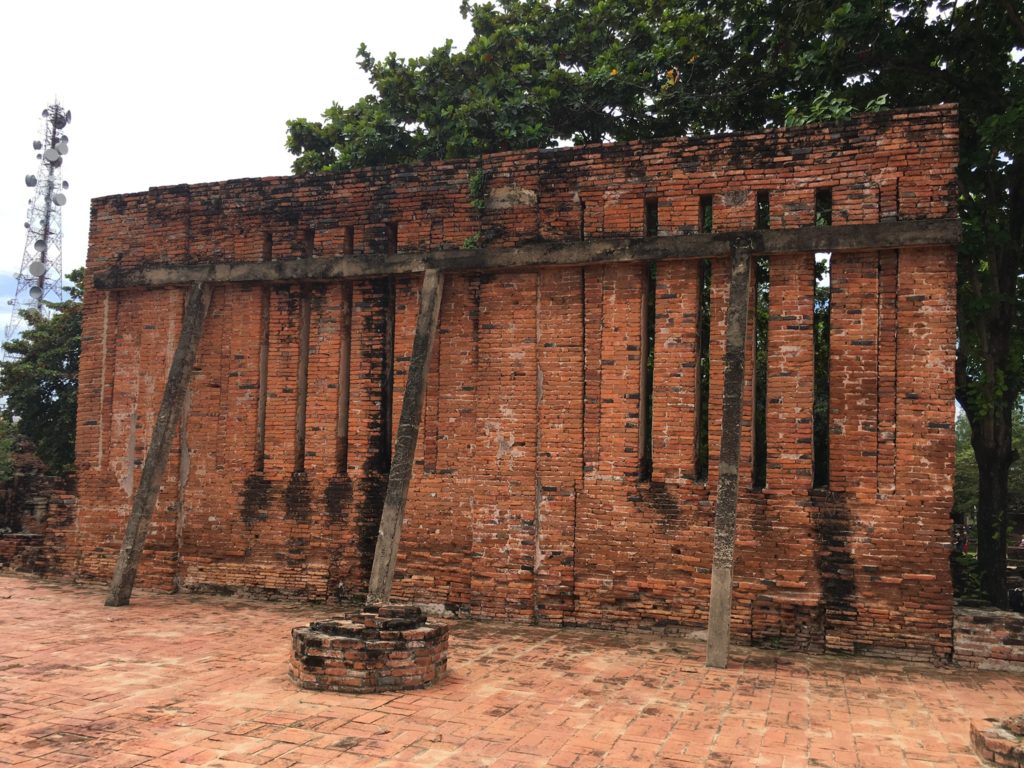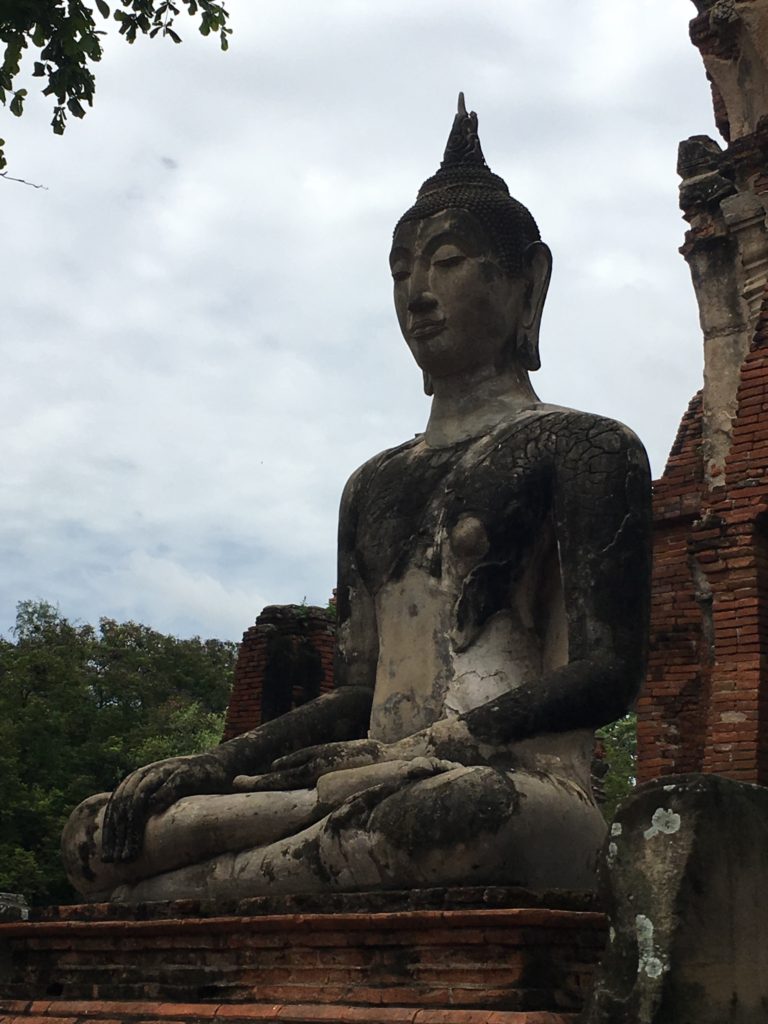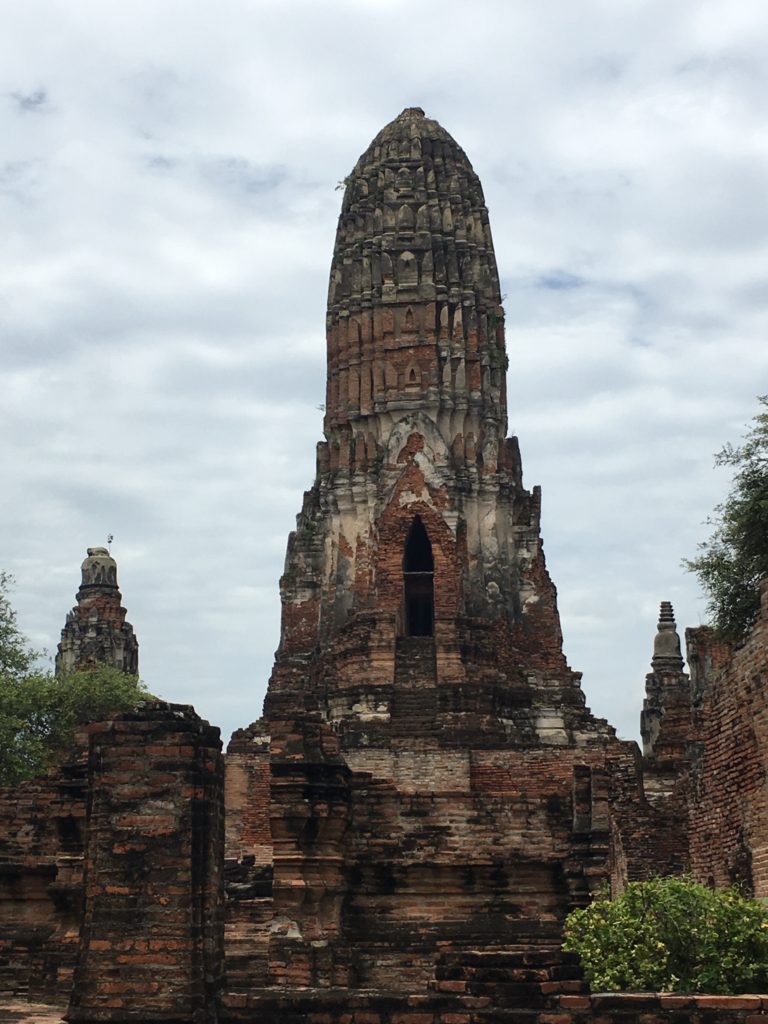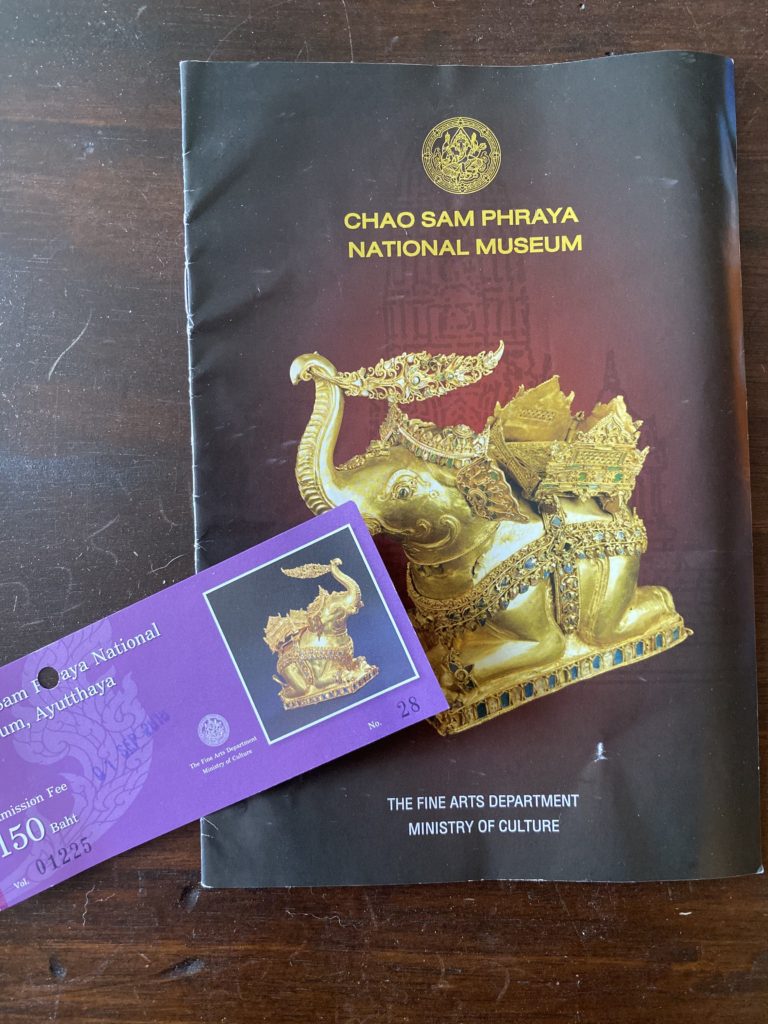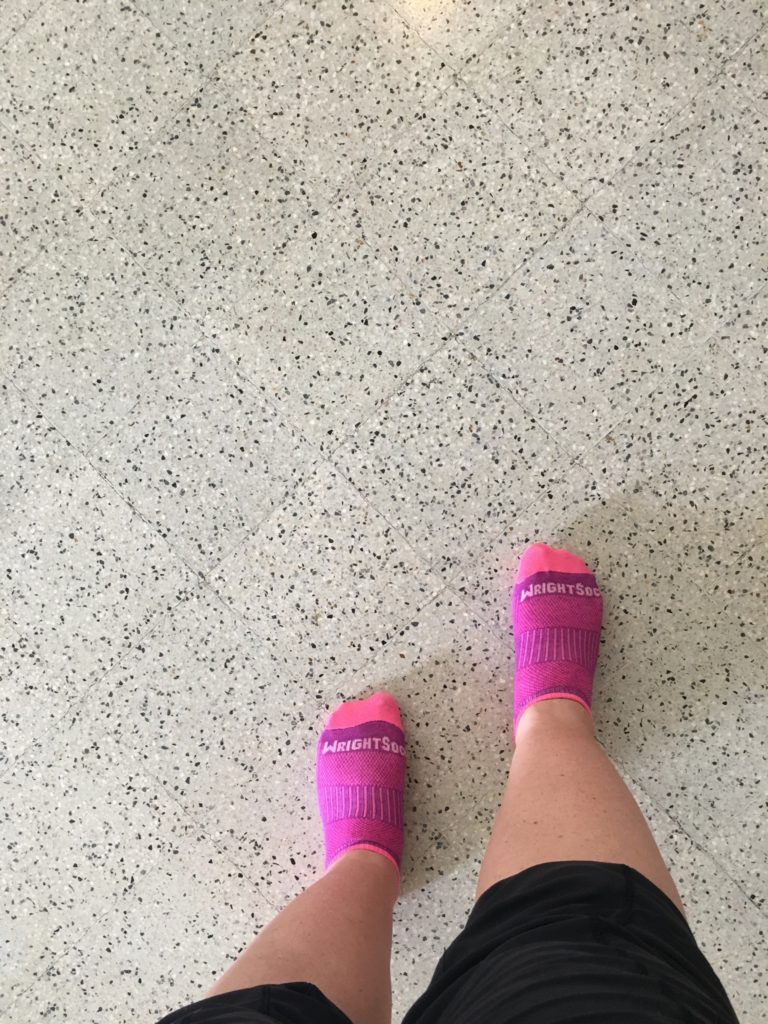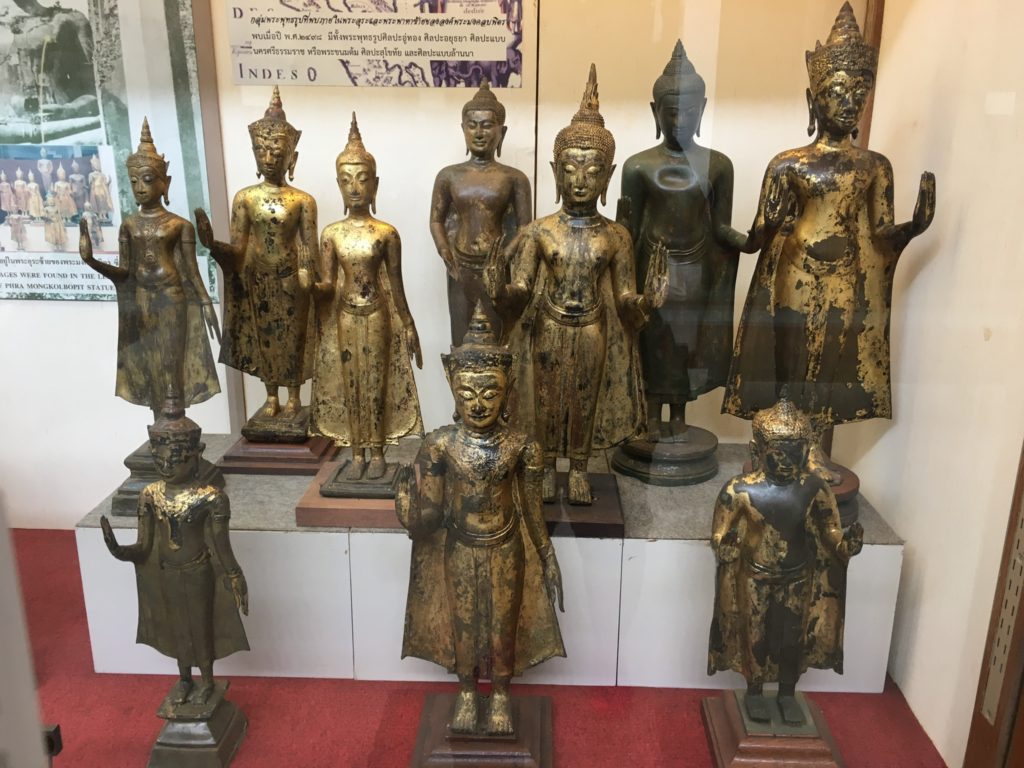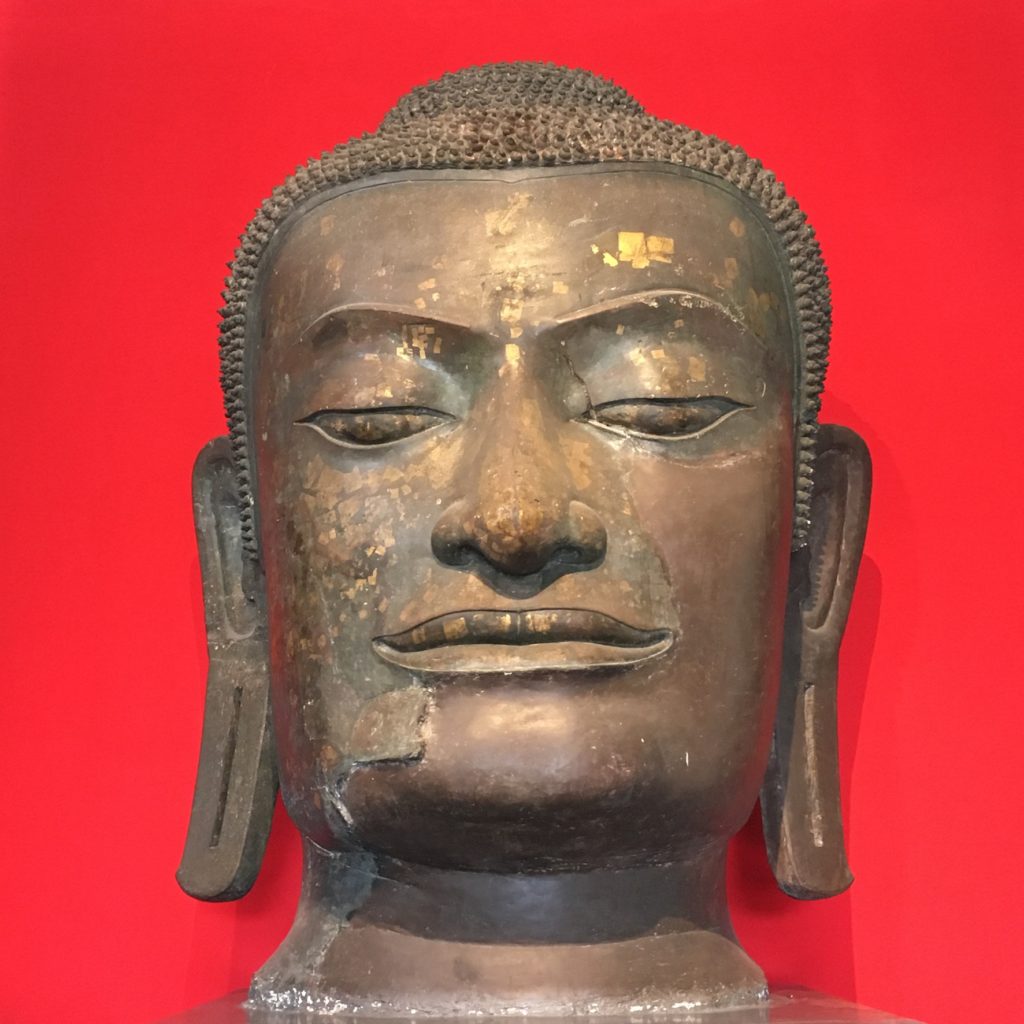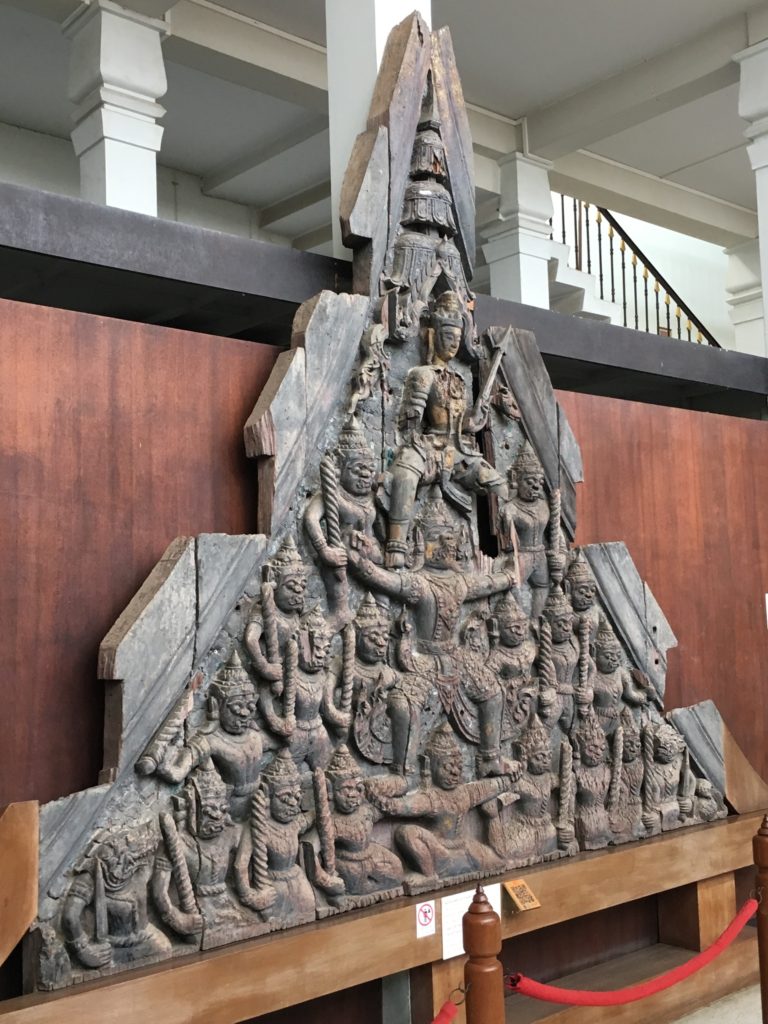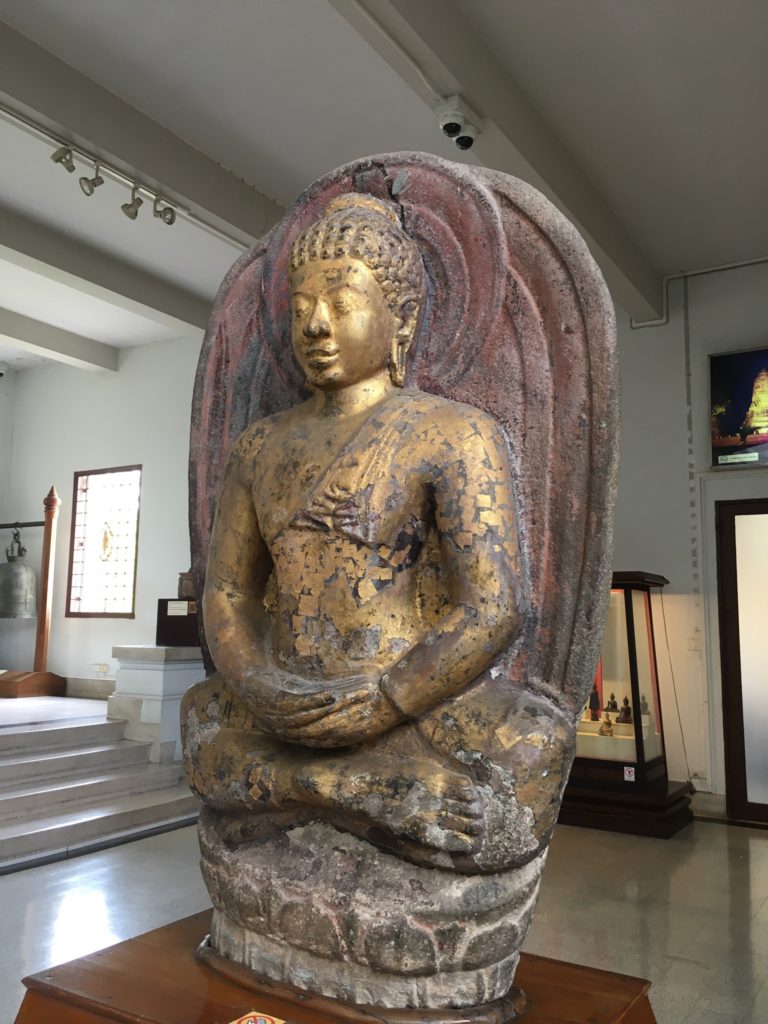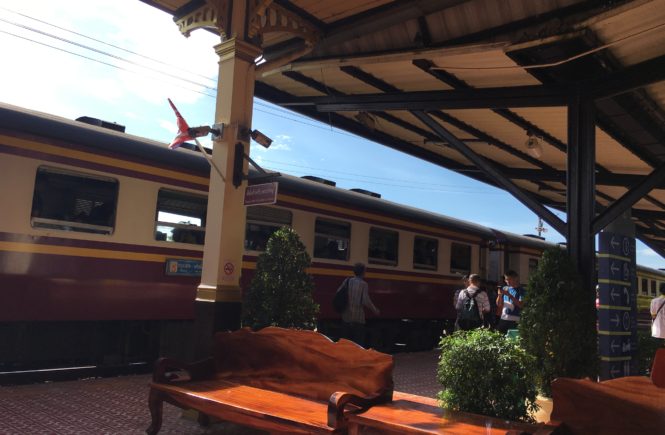Day 3 Continued: After a walk, train, boat, and another walk, I cool down and head over to the historical park. The park is spread over 700 acres, so make sure you’re ready for some walking and bring your water and a camera.
So, to be clear, I started over by the little train on the right, took a boat across the Pa Sak River, then walked to my hotel a couple blocks north of the smaller circle at the center of the map. The park, museums, and all the temples are an easy walk a little further west.
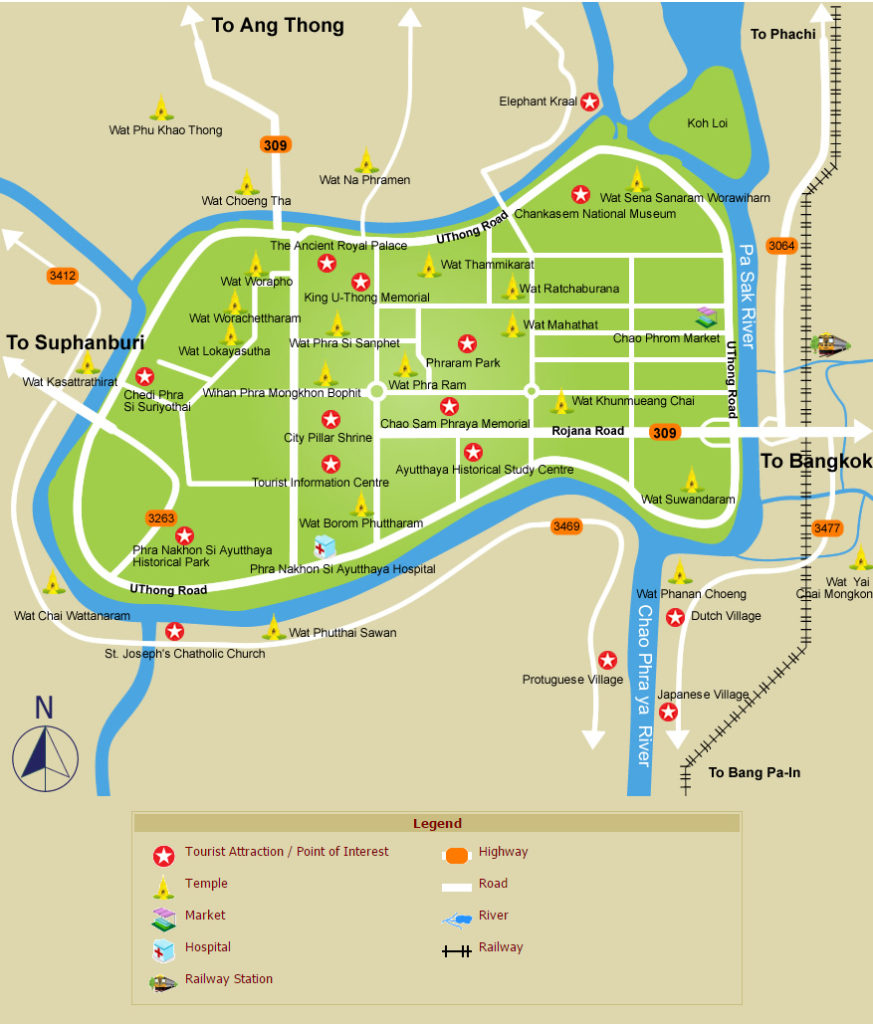
(https://thailand.sawadee.com/ayutthaya/citymap-ayutthaya.html)
The historical park is the remains of the second capital of Siam and was founded in 1350. It was strategically located inland and on an island to prevent enemy seagoing warships from attacking. The Burmese razed and burned the city in 1767 and it was never rebuilt. The city was laid out over a grid with canals and roads surrounding the main buildings. This UNESCO video gives a great summary of the city and its history.
I spent an afternoon wandering around the main city area, mostly around the Wat Mahathat area. The pictures below give a good idea of the state of the ruins. Not only are many of the buildings still standing, but the artistic detail is still in really good shape.
There was a group of young school children visiting at the same time I was there. They were interviewing those that were foreigners about their trips to Thailand, how long our visits were, what made us choose their country, etc. It was a pleasant interview and they were taking video. Their English was excellent and I enjoyed seeing their enthusiasm for their assignment.
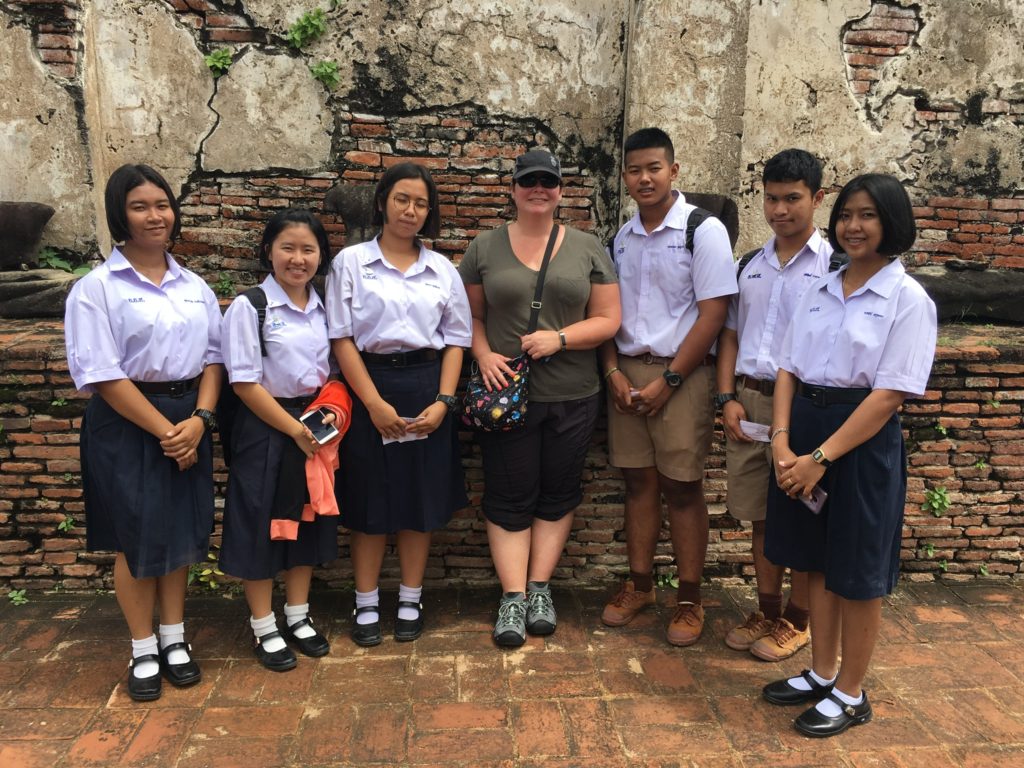
One of the most iconic sights in Ayutthaya is the head of Buddha in the roots of a tree. While no one knows how or why it’s there, there are many theories from the natural to the criminal.
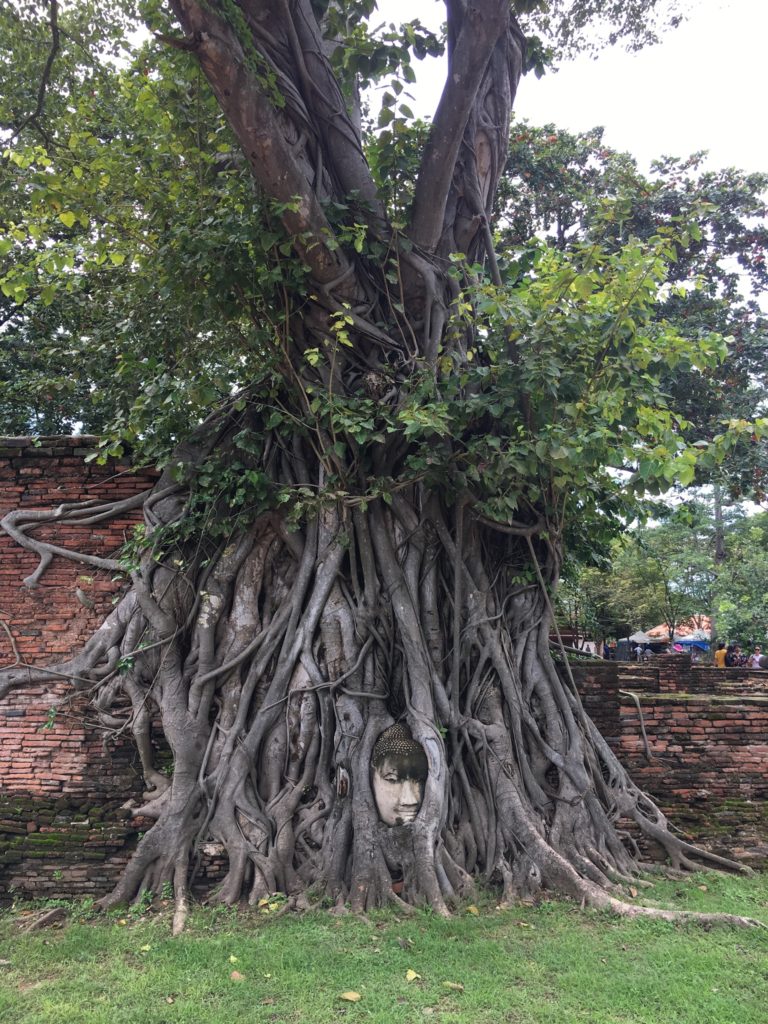
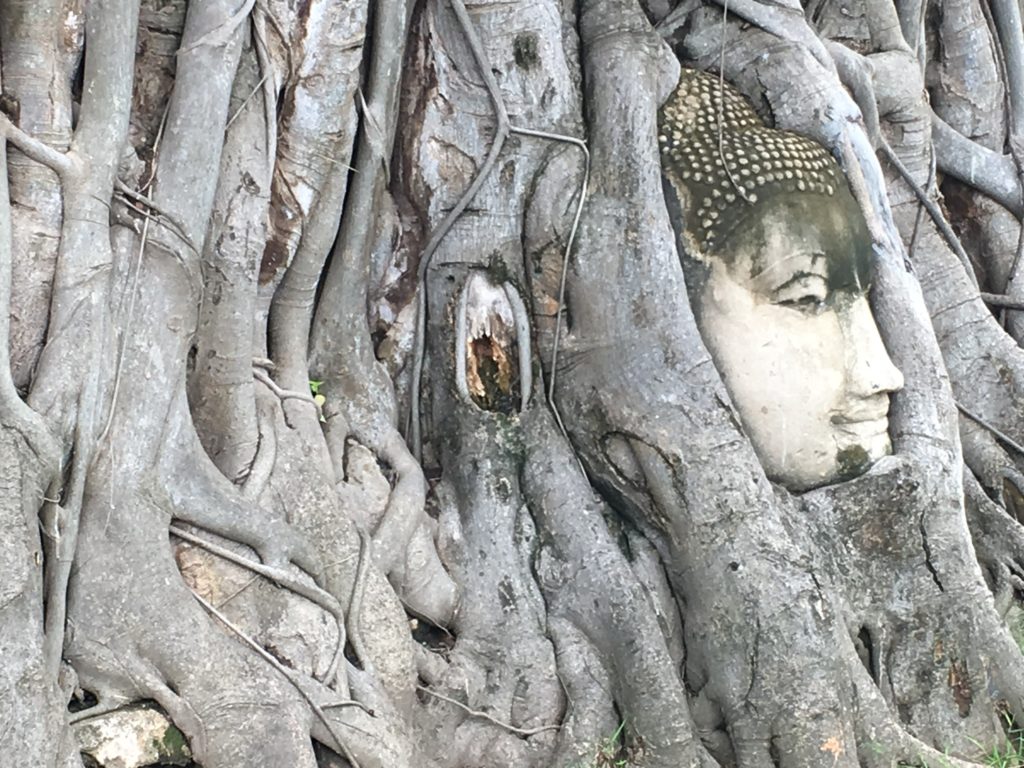
After wandering through the ruins for several hours, I headed over the the Chao Sam Phraya National Museum. It has many artifacts from the temples that have been carefully removed and restored over the years. Interestingly, most of the exhibits aren’t climate controlled, though if it all survived this long, maybe that’s the way it’s meant to be.
As you approach the front door, you’ll notice that there are shoes all over the stairs. Yep, no shoes allowed inside! Can’t say I’ve ever wandered though the Smithsonian barefoot, but I kind of like it. Once inside you’ll pay a small entrance fee (approximately $5) and you’ll receive a short guide in English to help explain the museum and its history.
Along the way, and elsewhere in Thailand, I encountered many spirit houses. These small (and sometimes not so small) are meant to house the protective spirits of an area. Often times, offerings are left at the house for the spirits. Be on the lookout for these small houses, some are beautifully intricate pieces of art all on their own and some are more reflective of the area they guard.
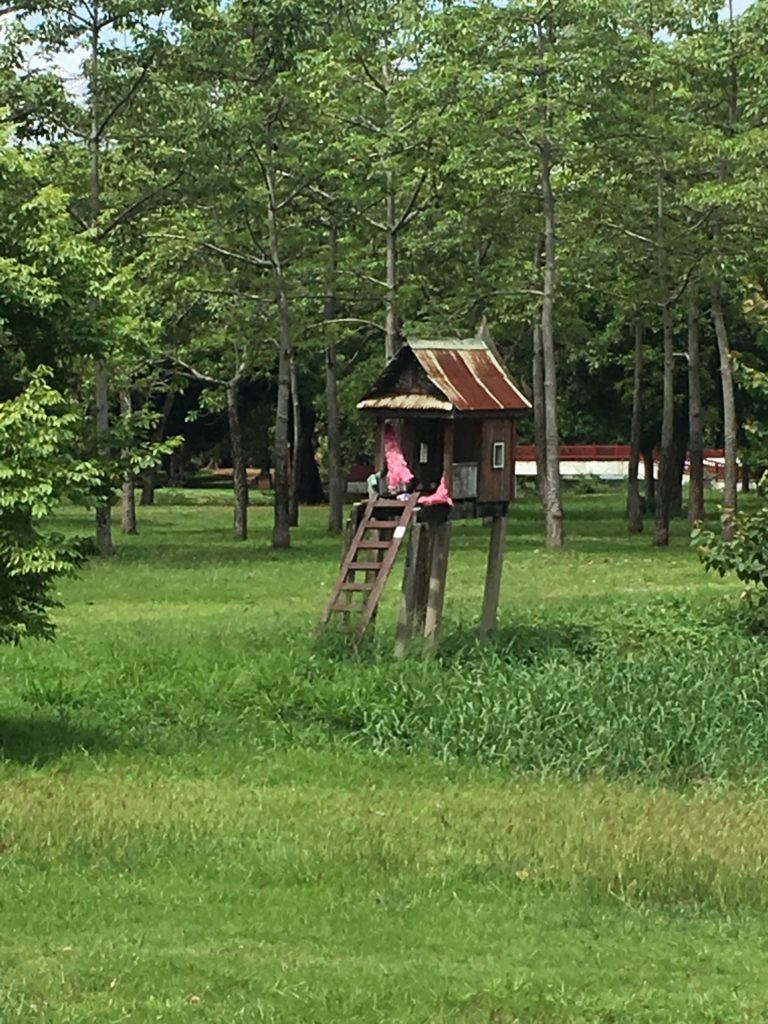
For dinner, I checked out the small street market. This is very different than some of the bustling markets in larger cities like Bangkok and Chiang Mai. This one had many families out eating together or picking up food to go home.
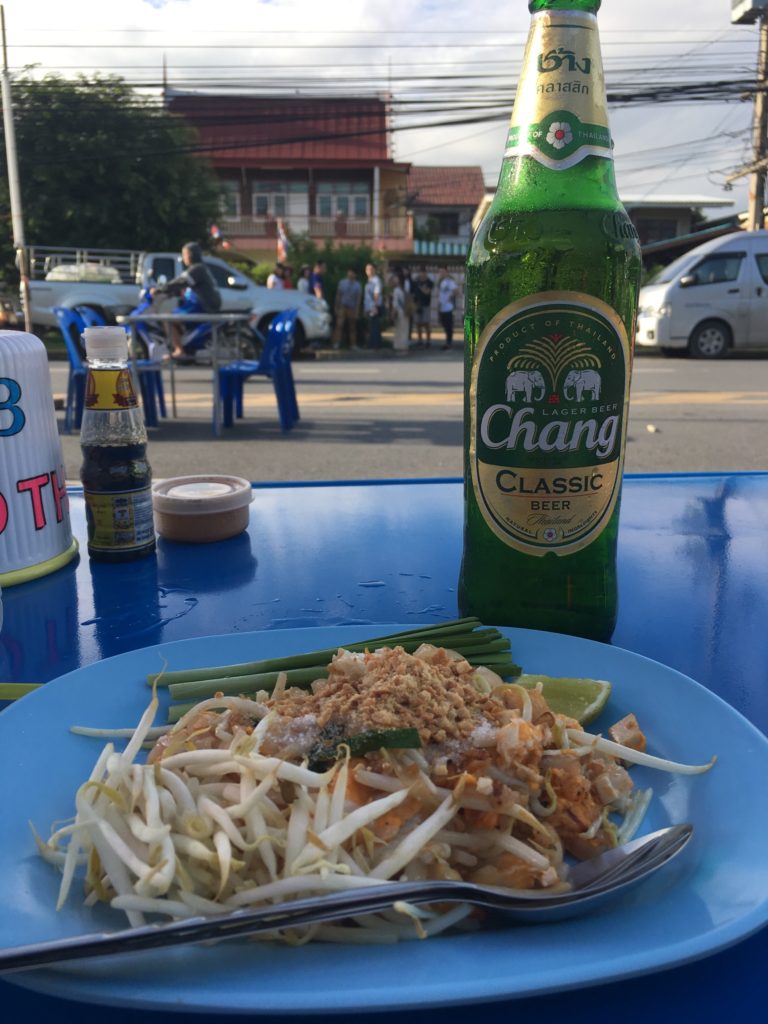
A Thai staple, pad thai and a beer 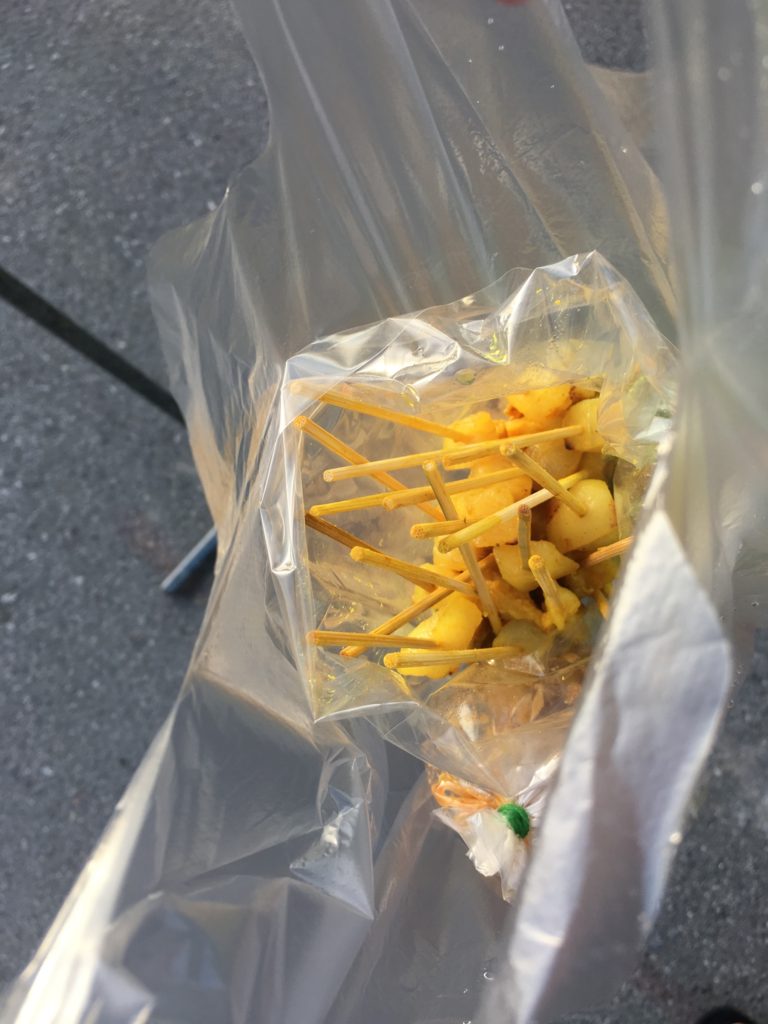
Pork skewers 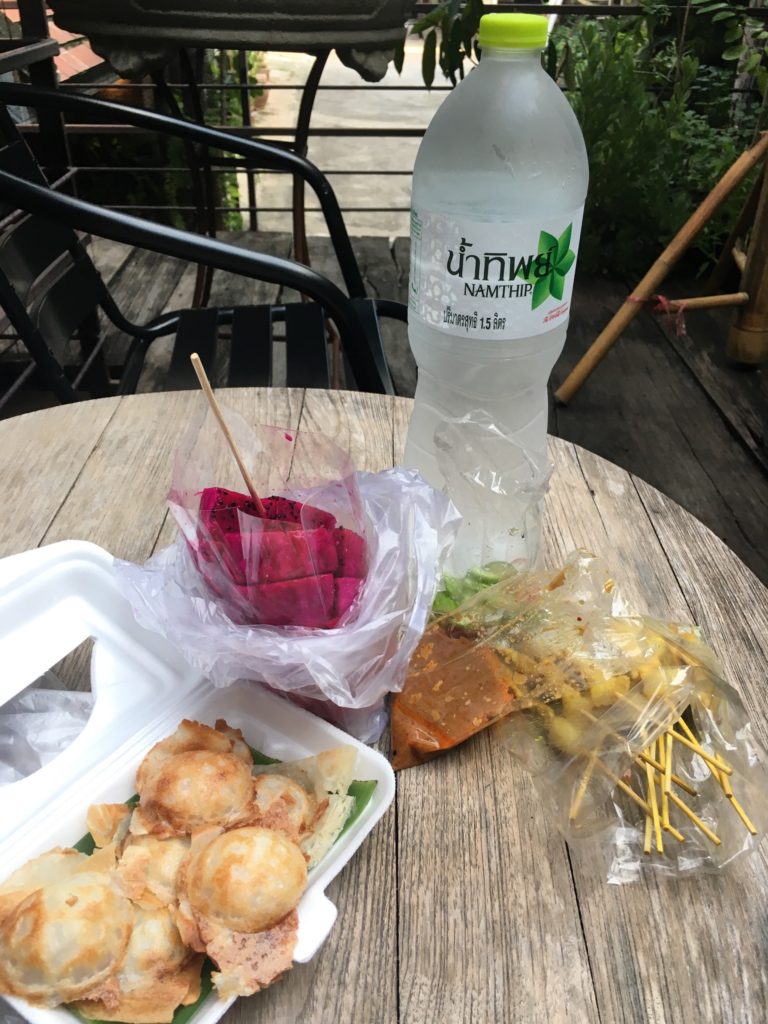
My feast: pork skewers, dragon fruits, cucumber pickles, and coconut dumplings 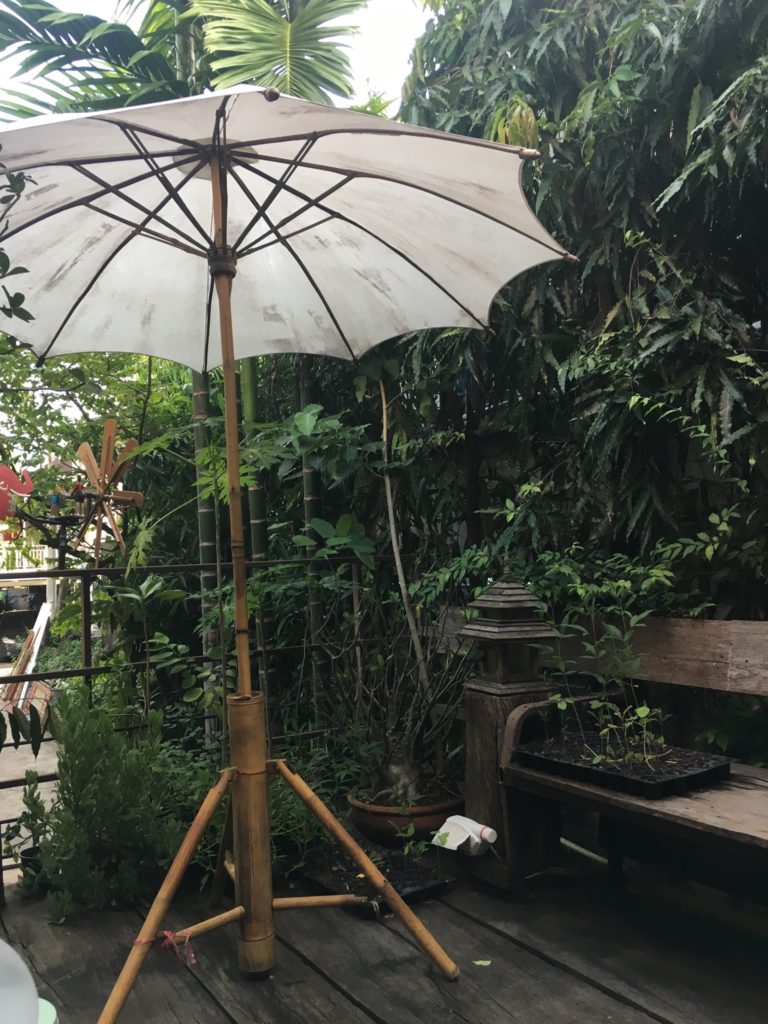
A shady respite for a picnic at my hotel 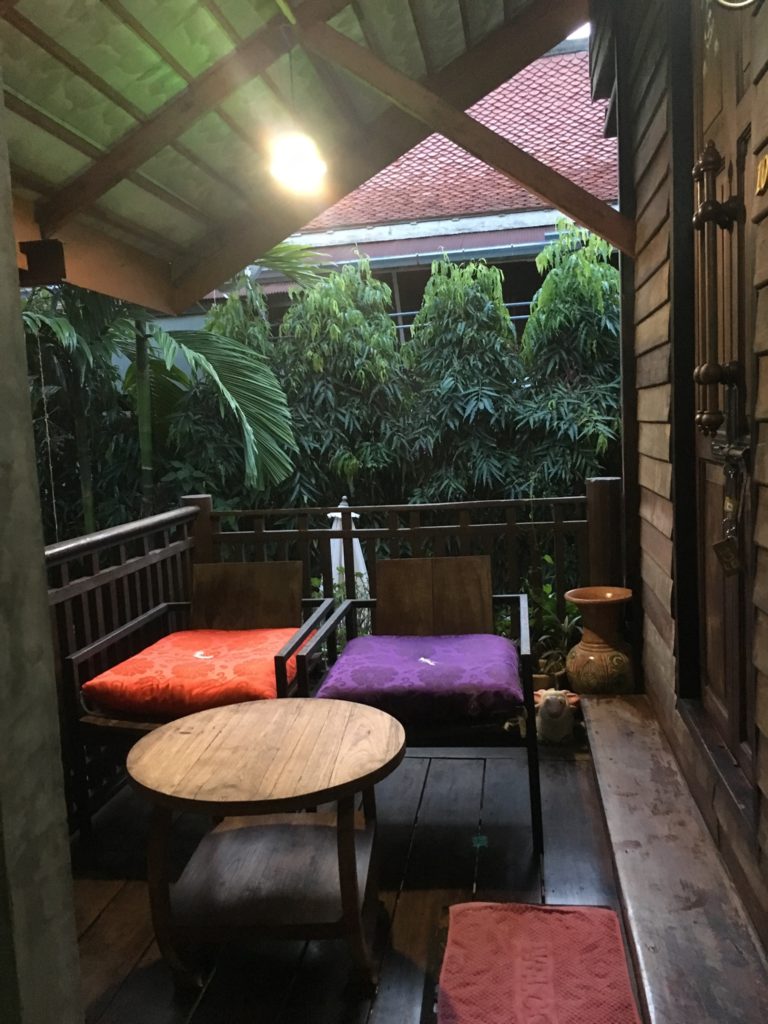
The hotel has many nooks and crannies to hang out in shaded from the hot sun
Time to pack, tomorrow is mainly a travel day headed to Sukhothai.
